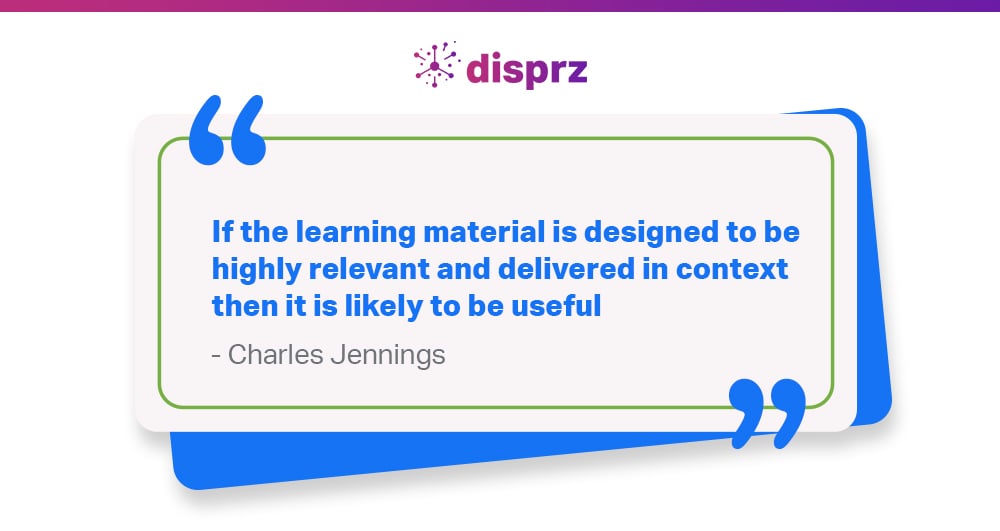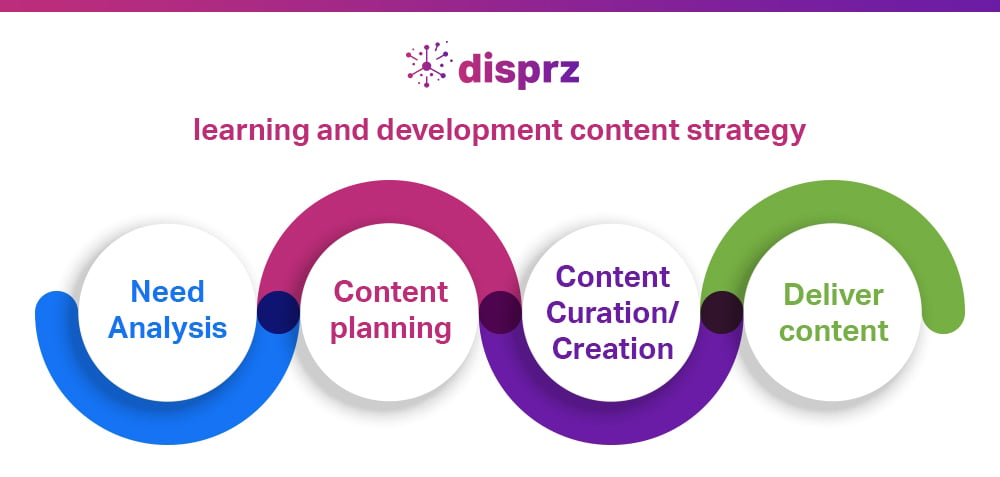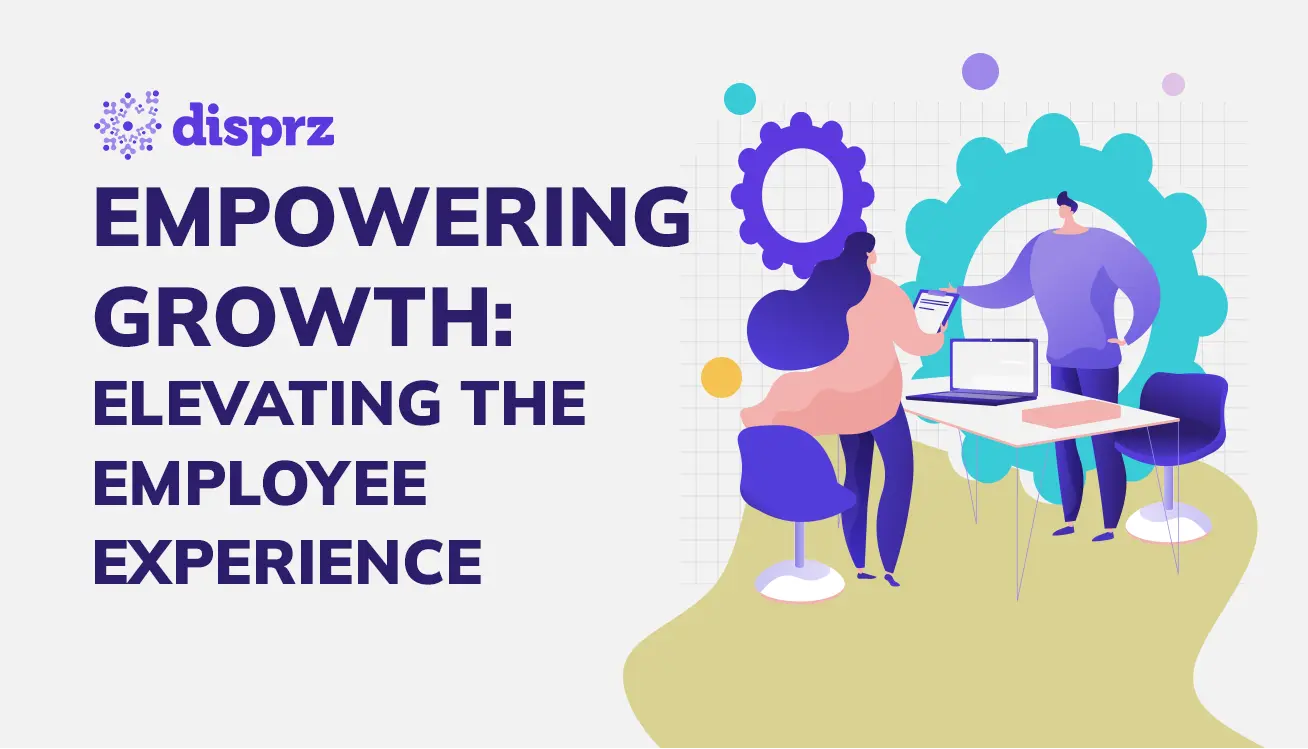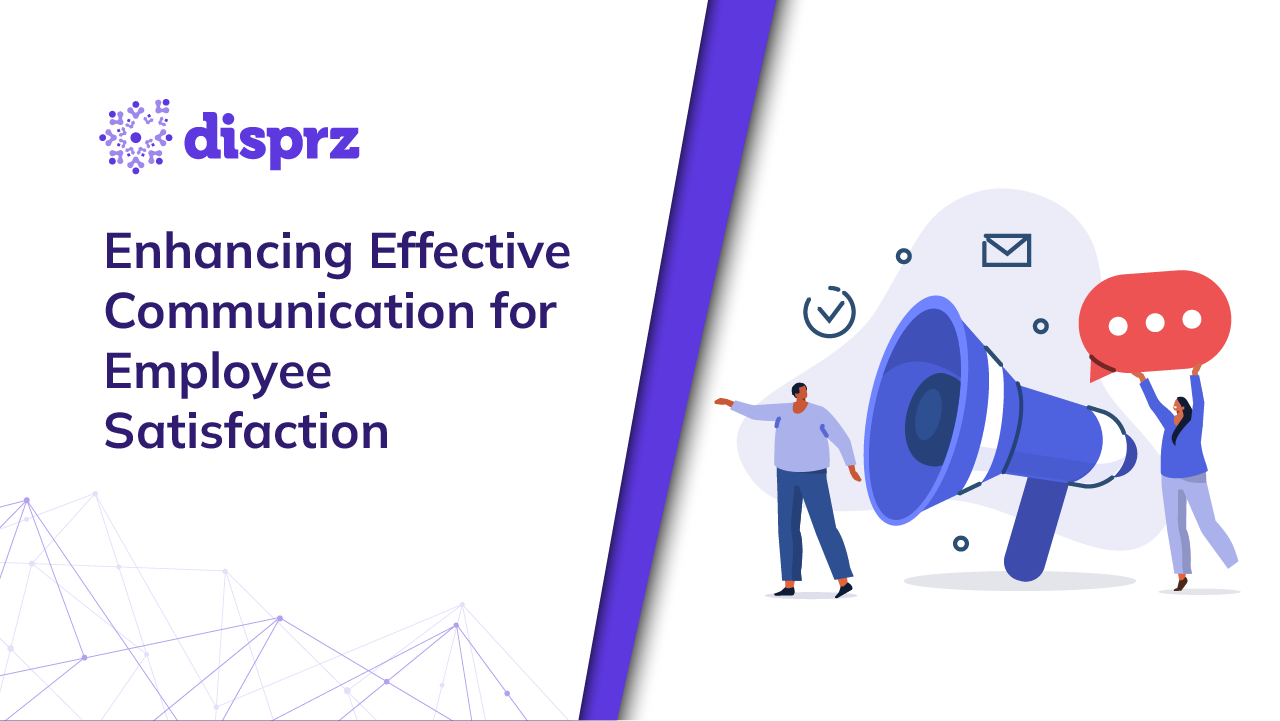
6 min read
• 15 Apr 2024
How to Create a Content Strategy for Learning and Development
Discover 4 steps to create a content strategy that defines a roadmap to make your learning and development more engaging and relevant to the learners in 2024
-
eBookEmployee Upskilling - A Detailed Blueprint For Building A Skills-Driven Learning Culture
As a learning and development professional, strategizing, curating, and managing content might appear time-consuming and arduous. However, content is an integral part of learning and development that cannot be ignored.
Content is king, not only in marketing but also in Learning and Development. Great content can capture attention and boost employee engagement. Content has the power to develop workforce capabilities and drive higher “ROI” if strategized effectively.
A well-defined content strategy can positively impact the creation, execution, curation, management, and enrichment of the content. Hence content strategy has topped the list of L&D priorities for 2024 for several organizations. If the learning content strategy has been off your radar, then it is time you pay attention before it jeopardizes your learning ROI.
What is a learning content strategy?
A content strategy is high-level planning that helps define a roadmap to make your learning and development more engaging and relevant to the learners. Having a strategy can help L&d professionals stay on the right track and deliver high-impact learning.
Planning and defining a content structure helps filter out the relevant content that gets employees upskilled and reskilled quickly. It becomes easier to determine which kind of content is required, when it is required, what should be included and what should be avoided.

Why is an L&D content strategy important?
When the content of the training programs isn’t aligned with the learners’ preferences, it often leads to low adoption that eventually affects the learning ROI. With an effective content strategy, you can lead your content in a direction that is preferred by the learners and develop employee capabilities. You can easily control your content’s quality, effectiveness, delivery, relevance, and length through content strategy.
Learning and development content strategy is very important as it helps you achieve the following:
-
Improve the time to productivity.
-
Dive deeper to understand what content is truly valuable.
-
Deliver content at the point of need.
-
Connect content journey to tangible skills or learning requirements.
-
Save time, effort, and resources.
-
Establish a culture of continuous learning.
-
Align content with business goals to drive business impact.
-
Tailor content to learners’ needs.
-
Improves learner engagement.
-
Provide employees with what they need to enhance their skills.
-
Create a consistent process that can be measured and improved.
How to create an impactful learning and development content strategy?
Building a content strategy that ensures impactful outcomes is one of the best ways to keep employees engaged in learning and development.
Here are 4 steps that you can follow to create an effective learning content strategy in 2024:

Step 1 - Need Analysis – What is the L&D content requirement?
For understanding content requirements, it is essential to set clear goals and KPIs as well as identify skills for each role in the organization. This will help in setting a benchmark against which the effectiveness of the content can be measured.
Employees’ performance should also be measured regularly to determine their development potential. One-to-one meetings can help understand the employees’ learning needs to tailor content to their unique requirements. The managers work closely with the employees; it is important to reach out to them to understand which type of content will benefit their team.
Step 2 - Content Planning – How will you map out the content journey?
Content planning is the foundation of an effective L&D program. Hence once the requirement is gathered, create a content plan explaining the steps to fill the gap between current and desired skills.
Below are a few ways for mapping out the content journey:
-
Identify the target group.
-
Identify the business goals to ensure the content is aligned with them.
-
Coordinate with the top management and understand the desired ROI from the training programs.
-
Determine the L&D budget for content development.
-
Create a catalog of skills for each target group
-
Create a user profile stating the employee’s designation, skill gap, the team they belong to, and the areas in which they need to get better.
-
Create measurable course goals.
-
Conceptualize and develop course design visions.
-
Determine the resources needed for developing impactful content.
-
Prioritize learning needs and create a wireframe.
-
Identify the L&D needs to focus on compliance training, self-directed training, or personalized learning.
-
Determine the learning solutions like LMS or LXP you can use to create a centralized repository for all your content.
Step 3 - Content Curation / Creation – How will you develop L&D content?
A crucial part of content strategizing is determining whether you will create the L&D content or curate it.
If you are creating content, here are the points you must consider:
-
Decide the format. Determine whether you will create videos, blogs, podcasts, ebooks, or create a learning journey that includes diversified content formats.
-
Include use cases and images to boost content engagement.
-
Make sure the content is aligned with the learning objective.
-
Give an overview at the beginning of what the employees will learn.
-
Explain how the employees can apply what they learn to work.
-
Get in touch with subject matter experts to amass relevant knowledge.
-
Find out if there is any existing learning and development material that can ease the content creation process.
-
Make sure that the materials consist of the information needed to upskill the employees.
-
Avoid phrases of jargon that the learners might not understand.
-
Guide the learner by providing examples.
-
Make sure the content clearly states the problems and solutions.
-
Create a narrative flow for your learning content.
-
If you are focusing on mobile learning, ensure the flashcard is visually appealing.
-
If you are focusing on microlearning, make sure the core message is conveyed clearly through the bite-sized content.
-
Make quality the priority to capture the learner’s interest.
-
Make sure the content is in a language that your learners understand.
If you are curating content, consider the following points:
-
Search and collect content from multiple sources.
-
Follow industry leaders, bloggers, podcasters, online media sites, etc.
-
Put together all the website links, videos, TED Talks, etc.
-
Avoid one size fits all approach.
-
Filter the relevant pieces for different user profiles.
-
Streamline the content to impact logic and structure.
-
Organize curated data based on the timeline.
-
Strike a perfect balance between quality and quantity.
-
Avoid information overload.
-
Through the mashup model, merge parts of curated content and propose a new perspective.
-
Assemble the curated data into one cohesive course.
-
Enhance the curated content by adding comments, tags, or explanatory notes.
-
Make sure you obtain permission before sharing or reusing content.
-
Opt for a learning platform that integrates with various content providers.
Step 4 - Deliver Content – How will your content reach your learners?
Determining how to deliver content is another important aspect of L&D content strategy.
There are various methods to deliver content like live webinars, slide decks, emails, etc.
However, It is important to embed learning into the flow of work to ensure the target group in real-time.
Having an organized SaaS-based learning platform can ease your work as an L&D professional. You can easily create or curate content with a skilling suite like Disprz. It also offers free and paid integration with various content providers. Besides, it helps in skill mapping to identify trending skills. It even enables you to monitor employee performance through KPI scores to spot the areas of improvement. Moreover, it helps in driving personalized learning as it is powered by AI that recommends content to employees based on their past learning behavior.
Studies show that 77% of learning and development professionals believe that personalized learning is critical to employee engagement.
Conclusion
One of the biggest L&D challenges is creating impactful content that drives results. The right content strategy training can help address this challenge and build workforce capabilities. Effective content can bridge the skill gaps; hence L&D content strategy must be given utmost importance. Investing time in strategizing content can help in building learning materials that are relevant to each employee. The right strategy can help in developing winning content for achieving the desired outcome. Try the Disprz learning platform today!
About the author

Debashree Patnaik
Debashree is a seasoned content strategist at Disprz.ai, specializing in enterprise learning and skilling. With diverse experience in B2B and B2C sectors, including ed tech, she leads the creation of our Purple papers, driving thought leadership. Her focus on generative AI, skilling, and learning reflects her commitment to innovation. With over 6 years of content management expertise, Debashree holds a degree in Aeronautical Engineering and seamlessly combines technical knowledge with compelling storytelling to inspire change and drive engagement.
More Resources
4 min read
• 15 Apr 2024
Unlocking the Power of Managerial Engagement in Talent Development
4 min read
• 09 Apr 2024
Nurturing Excellence in Building Leadership Pipelines
4 min read
• 09 Apr 2024
Improving “Employee Experience” For Organizational Growth
Sign up to get free resources and stay up to date with Disprz!
Discover how Disprz can align learning and upskilling with your desired business outcomes.





